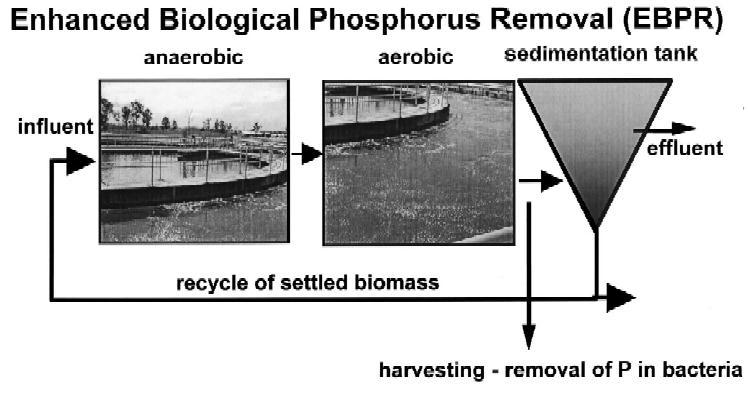In biological nutrient removal, we engineer systems to favor the growth of aggressive phosphate accumulating organisms. This is done by having an anaerobic zone (negative redox potential without nitrate/nitrite present) along with soluble organics (preferentially organic acids). This is why the BNR system usually has influent entering into the anaerobic chamber. In this step the Phosphate Accumulating Organisms (PAO) - release phosphate yielding the energy need to accumulate soluble organics (a food source). This is why in the anaerobic reaction step, we see an increase in soluble phosphate.
After reacting with influent organics in the anaerobic zone, the PAO organisms enter the aerobic portion of the treatment system. With abundant oxygen, the organisms "digest" the accumulated organics and use some of the energy to uptake soluble phosphorus. As the organisms are exposed to repeated cycles of anaerobic/aerobic conditions - the system should favor the growth of organisms with the ability to uptake carbon (food) in the anaerobic zone. With excess phosphate in the water - a number of the promoted organisms should be PAO bacteria.
What problems can happen? If the anaerobic/aerobic zones do not sufficient residence time the process can lose stablity. Additionally, some influent may not have a good oraganic makeup to encourage the PAO development. Also, if nitrate is present in the recycle to the anaerobic chamber - PAO bacteria will not have as big advantage.
In all - phosphate removal relies on providing conditions that favor the PAO bacteria. This requires understanding their unique ecology and making sure that you are not overlooking one of the key factors promoting their growth.


 RSS Feed
RSS Feed